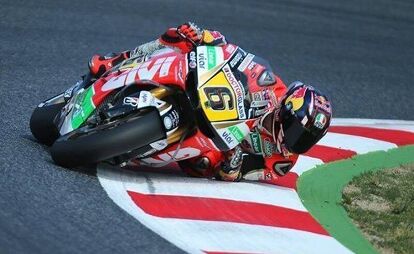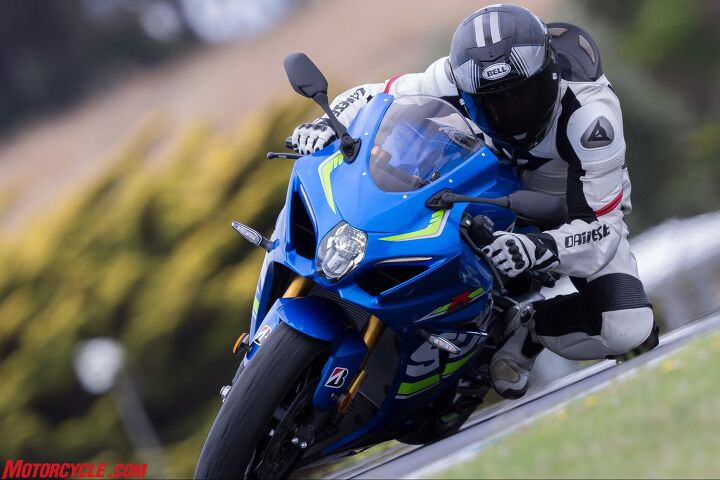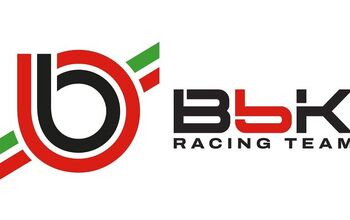How Much Better Are Tires Compared to 30 Years Ago?
Ask MO Anything: Do cobblestones give better traction?
Dear MOby,
Dovetailing into the article about how fast we’ve gotten… is the question of whether today’s “average” sport tire is as good as top-of-the-line racing tires of, let’s say, 30 years ago? Growing up in France (1965-’72) I saw incredible lean angles on OEM tires by guys riding stock bikes: CB350, H1, CB750… and this was street riding, often on cobblestone.
Sincerely,
Jong
Yup, and I remember watching guys on our trails jumping 80 feet in the air on Hodaka Combat Wombats as I pedaled asthmatically along trying to keep up on my 200-pound Huffy-10-speed. Not to question your memories, but lots of things seem to take on heroic proportions looking back 30 years, don’t they?
No doubt at the time they looked like incredible lean angles to a 10-year old kid, and you may have observed Christian Sarron in training, who knows? But incredible lean angles for most riders with a self-preservation instinct only occur on race tracks, and nobody really even needed knee pucks until Kenny Roberts came along in the late ’70s. Granted, it was his new “hanging off” style that got his knees dragging; before that riders mostly stayed tucked in, and many of them did get leaned right over. KR’s advantage was his ability to over-ride the tires of the day, and slide the bike dirt-track style without falling off. Knee-on-pavement is really nothing more than an evolution of steel shoe-on-dirt.
What happened next, of course, was tire manufacturers attempting to build tires KR couldn’t slide. The biggest tire innovation occurred when Michelin and Pirelli both came up with radial motorcycle tires: In 1983, Freddie Burdette Spencer won the first Grand Prix on a 500cc bike with a Michelin radial rear tire (and went on to beat KR for the 500 title). In 1984, Pirelli’s new MP7 radial was standard equipment on the amazing new Honda VF1000R. In ’85, Randy Mamola became the first to win a GP (San Marino) with Michelin radials at both ends (while Freddie won both the 250 and 500cc titles). The radial undergoes less heat build-up than a conventional tire, which means longer life, softer rubber compounds and higher cornering speeds. The radial was a huge step forward; we’re still awaiting the next one. (Maybe it’s traction control, now ubiquitous on serious sport motorcycles.)
To answer your question as to whether today’s “average sport tire” is as good as a “top-of-the-line” racing tire 30 years ago, I’d say indubitably yes. I mean, they have to be, since bikes are all way more powerful than they were 30 years ago and lap times have fallen dramatically at every track in the world. That old aphorism “racing improves the breed” is probably truer about tires than any other motorcycle component, especially given the inscrutable nature of their manufacture. Pirelli, Michelin, Bridgestone and Dunlop have all used that line in at least a few of their ads over the years, and riding any of their recent high-performance DOT-legal street tires around the world’s racetracks has us MOrons believing it’s far from hype.
Thirty years ago it was a big deal to drag your knee, a death-defying feat that spawned a million t-shirt sales, thousands of moronic (small “m”) how-to articles, and huge profits for purveyors of aftermarket bodywork. Today, if you can’t get your elbow down you might as well stay on the porch. Sure there’ve been huge improvements in frames and suspension. But the lion’s share of higher corner speeds and lower lap times is down to where the rubber meets the road. Tires.
I predict the next breakthrough will be VRCT: Variable Rubber Compound Technology. Your ECU will detect real-time traction and how aggressively you’re riding, and will send an electronic signal to the rubber molecules to stiffen up or go all gooey, depending. One set of tires will last 50,000 miles and will be perfectly adequate for everything from track riding to grand touring. Leaving the shop after purchasing a new $2000 pair, you will run over a drywall screw.
Send your moto-related questions to AskMOAnything@motorcycle.com. If we can’t answer them, we’ll at least make you feel temporarily better by thinking you’re talking to somebody who cares even if we don’t. Though come to think of it, we haven’t not been able to come up with a plausible answer that’s provably wrong yet. Hah! Snopes can’t touch us. And we do care, really we do.
Recent Ask MOs:
Will I be Shunned If I Ride an Automatic Motorcycle?
Say, what’s that Terrible Smell in my Jacket?
Are Inner Tubes on Big Cruisers a Bad Idea?
More by John Burns


































Comments
Join the conversation
Have to give a shout-out to Suzuki here. Pretty sure the '88 GSXR750 was the first mass-production bike to utilize the now-ubiquitous 17"/17" wheel sizes that are still the sportbike standard to this day. Even the tire profiles and widths are still close to today's: 120/60 and 160/60.
Right?
I just read an article in a local bike mag that finally confirmed what I have experienced.
Sportbike tires are horrible in cold weather. The full dressers have better traction than the "sticky" tires on your sport bike. Be careful out there. This can be a great excuse to buy another motorcycle like a cruiser or touring bike !!! Be safe out there and keep the shiny side up!